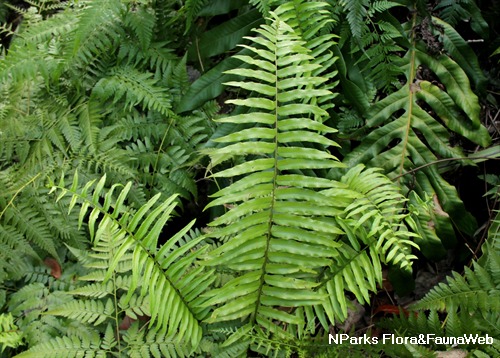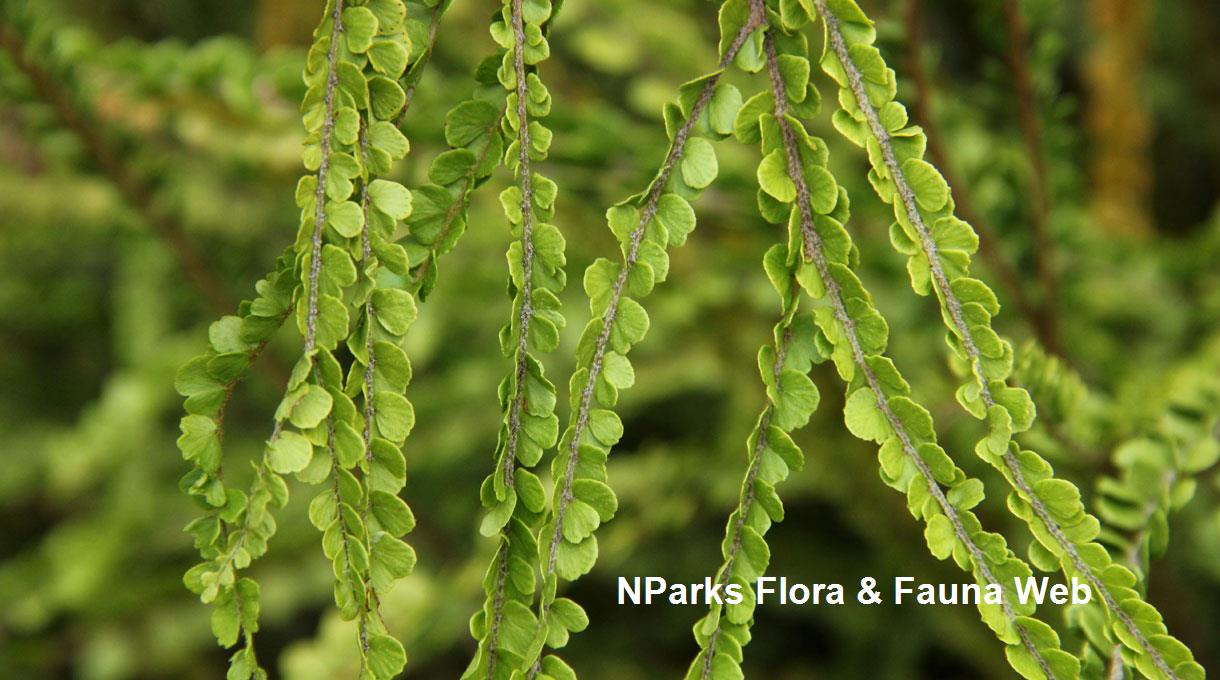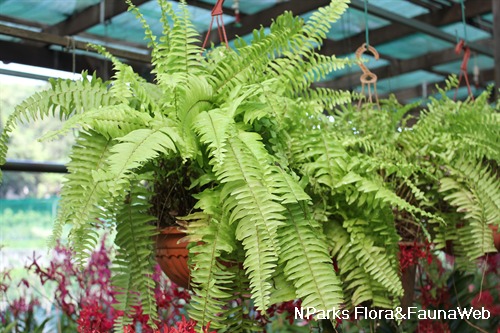.jpg)
Back
Nephrolepis biserrata (Sw.) Schott
| Family Name: | Nephrolepidaceae |
| Common Name: | Broad Sword Fern, Paku Larat, Giant Sword Fern, Sword Fern, 长叶肾蕨 |
Name
Classifications and Characteristics
| Plant Division | Ferns & Lycophytes (Non-Seed Vascular Plants) (Fern) |
|---|---|
| Plant Growth Form | Herbaceous Plant |
| Mode of Nutrition | Autotrophic |
Biogeography
| Native Distribution | Pantropical, Southeast Asia, Australia, North and South America, the Pacific islands |
|---|---|
| Native Habitat | Terrestrial |
| Preferred Climate Zone | Tropical |
| Local Conservation Status | Native to Singapore (Least Concern (LC)) |
Description and Ethnobotany
| Growth Form | Ascending to sub-erect fern, sometimes having a few fronds drooping. |
|---|---|
| Foliage | Fern blade is large and measuring between 1 - 1.5 m long and 30 - 40 cm wide, lanceolate and narrowing towards the base and apex, stipes measuring about 40 - 60 cm long. |
| Reproductive Parts - non-flowering plant | Sori round and arranged in one row nearer to margin, indusia kidney-shaped and glabrous, measuring about 1.5 mm wide. |
| Etymology | Genus Nephrolepis means "kidney-scale" and refers to the shape of the indusia of the sori. Species biserrata means double-toothed and refers to the leaf margin of the fern. |
Landscaping Features
| Desirable Plant Features | Ornamental Foliage |
|---|---|
| Landscape Uses | Parks & Gardens, Small Gardens |
Fauna, Pollination and Dispersal
| Seed or Spore Dispersal | Abiotic |
|---|
Plant Care and Propagation
| Light Preference | Semi-Shade |
|---|---|
| Water Preference | Moderate Water |
| Plant Growth Rate | Fast to Moderate |
| Rootzone Tolerance | Moist Soils, Well-Drained Soils |
| Propagation Method | Spore, Division |
Foliar
| Foliage Retention | Evergreen |
|---|---|
| Mature Foliage Colour(s) | Green |
Image Repository
Others
| Master ID | 258 |
|---|---|
| Species ID | 1554 |
| Flora Disclaimer | The information in this website has been compiled from reliable sources, such as reference works on medicinal plants. It is not a substitute for medical advice or treatment and NParks does not purport to provide any medical advice. Readers should always consult his/her physician before using or consuming a plant for medicinal purposes. |







.jpg)



.jpg)